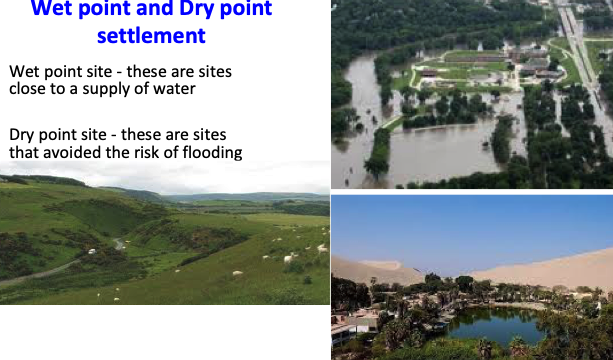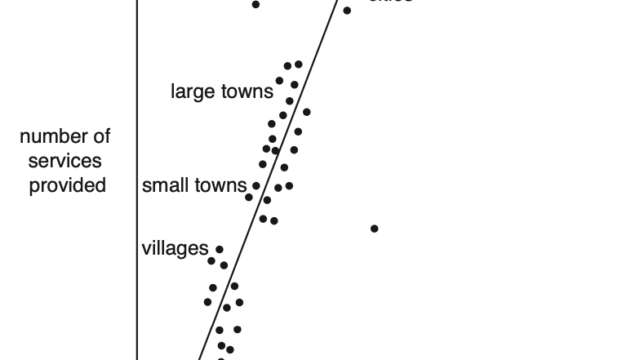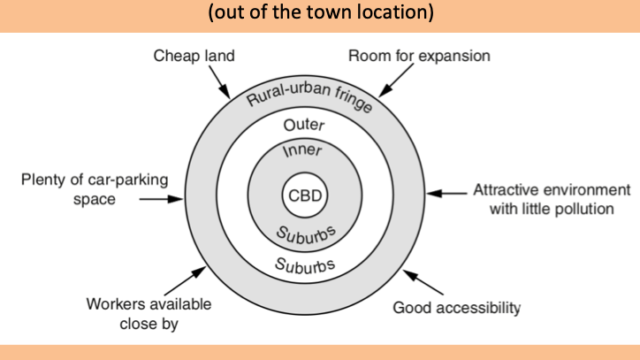What is a rural and urban settlement?
| Basic Concepts | Explanations |
|---|---|
| What is a rural and urban settlement? | Settlement is a place where people live and interact through several activities such as agriculture, trading or services. Settlement helps us to understand man’s relationship with his environment. In general rural refers to countryside and urban refers to town and cities. Communities living in rural settlement are predominantly involved in primary activities such as farming, lumbering and mining. On the other hand, unban communities are engaged predominantly in secondary and tertiary activities such as construction, food processing, banking research etc. Rural and urban settlements are often compared also in terms of their functions, population sizes and population density. A rural settlement tends to have small population and low population density. Urban settlement often has a large population size and high population density. |
| Site of a city | Site is the actual piece of land upon which a settlement is built. Wet point sites settlements have a good water supply. on the contrary Dry point sites are away from the risk of flooding. Coastal cities are considered as good trading sites whereas mining town such as Bisbee in Arizona was founded as a copper, gold, and silver mining town, would be considered as a 'resource site' based settlement. |
| Functions and land use of a city | Functions and land use of a city may change over time. Most of the urban places have major industrial, manufacturing and tertiary sector oriented functions. Some are important research and development centers. On the other hand, capital cities have dominant administrative functions and related jobs. |
| Hierarchy of settlements | An ordering of settlements according to the size of population, number of services and sphere of influence. |
Your Task
Watch the video and answer the following questions
-
Explain the site of the town
-
Identify the major functions of the town.
-
Why does the town of Svalbard sparsely populated?
- Analyze: The flow of migration to the visa free zone of Svalbard
Key definitions:
| Terminologies | Definitions |
|---|---|
| Range | The maximum distance people are willing to travel to obtain goods and services |
| Threshold population | The minimum number of customers necessary to support an economic activity to run at a profitable scale. |
| Sphere of influence | The maximum distance people are willing to travel to obtain goods and services is the range of that particular service. The area around a settlement that comes under its direct economic, social and political influence is the sphere of influence. Range of the services of a city determines its sphere of influence. |
| Comparison shops | Higher order shops with large range and threshold population. Such as furniture, clothes, electronics etc. People tends to compare prices in different comparison shops before buying as they may have huge price differentes. These are sometimes speciality shops that exert large pull over a large area. |
| Convenience shops | Selling small items particularly groceries selling bread, milk which are needed almost everyday, tailoring shops with small turnover etc. These are lower order shops that require smaller threshold population. |
The larger the settlement, the greater the range of services and therefore the sphere of influence.
Settlements higher up the hierarchy for example large cities or provincial towns with higher order services like international airport, university, comparison shops etc that require a large threshold population are higher oder settlements. they are fewer in numbers and are spread farther apart.
Settlements lower down the hierarchy for example, villages and isolated farmsteads with a few lower order services like local shops or a primary school, convenience shops etc. are low order settlements. These settlements are more in numbers and are more closely spaced.
Tasks:
Observe the above diagrams and maps, discuss in groups and try to answer the following questions
| Questions | Concepts/terminologies to be used in the answer | Extra references |
|---|---|---|
| Explain why more people are living in the rural-urban fringe of large towns and cities in MEDCs? (5 marks) | 1.Increased car ownership/better public transport. 2. Quiet/little air pollution 3. Crime 4. Close to the city and workplace |  Click Here to read about the benefits of moving to suburbs in developed countries. |
| Describe and explain the service provision in a named settlement you have studied (7 marks). Name the settlement before you start explaining. | Think about your own city and try to find out how you can explain the following points: Population size Major functions of the selected city/town/village Order of services Threshold population Spheres of influence |  Know your city Braunschweig. |
| Watch the video and (1) identify 3 major problems of the city. (2) 3 major points of attractions. | Traffic, modernization and refurbishment of the old structure, commercial hub and touristic hotspot, multicultural environment. New York cities biggest civic complaint is noise. EPA (Environmental Protection Agency) recommends 70 db as a safe average for a 24 hours day. In New York city, the man level is 73.4 db due to a huge volume of traffic. Exposer to the street noise creates stress and negative impacts on people's health. |


























